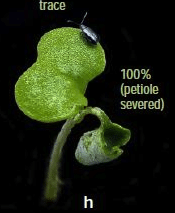
It could be a heavy year for flea beetle feeding, especially since a lot of canola will emerge right at peak activity for the insect. High winds may force flea beetles off leaf tops and down to leaf undersides and leaf stems. This could actually make the situation worse, since it takes just a few bites on a stem to nip off a whole cotyledon or sever the stem. Stem feeding, if it’s happening on a lot of plants, has a lower control threshold than the 25% damage recommended for leaf feeding.
Growers taking advantage of good seeding weather should take a few minutes each day to scout emerged crop. Flea beetles can do a lot of damage in a week, and if growers wait until all crops are seeded before pest scouting, those early crops could be lost.
Seed treatments should still be effective for fast emerging canola, but flea beetles have to feed to take up the insecticide, so some feeding damage is expected. Growers and crop scouts should be vigilant, especially if the flea beetle population has a high proportion of striped flea beetles. Some research suggests the amount of feeding required for control may be greater for this species.
At high numbers, flea beetles may overwhelm the seed treatment protection. Monitor the amount of leaf feeding to determine if this is occurring, and apply a foliar insecticide if the action threshold of 25% leaf area damage is exceeded and flea beetles are still actively feeding. Click here for images that show what different levels of leaf damage look like.
A number of foliar products are registered for flea beetles on canola. To find them, click your province for your guide to crop protection: Alberta Saskatchewan Manitoba.
